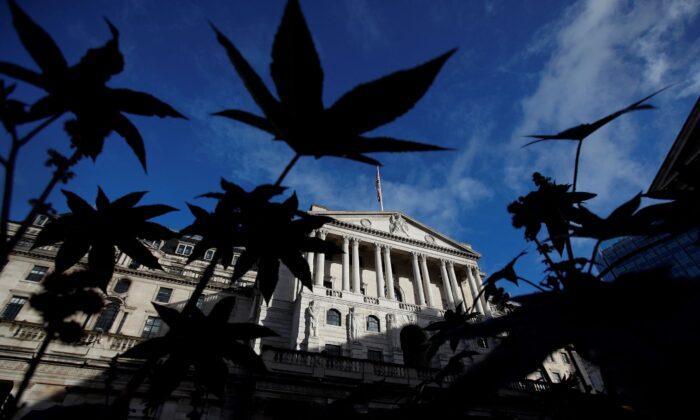LONDON/HONG KONG—World stocks picked up from 21-month lows on Tuesday and sterling rallied after hitting record lows versus the dollar a day earlier on UK plans for tax cuts, as market slides ran out of steam.
U.S. S&P futures bounced 0.94 percent after Wall Street fell deeper into a bear market on Monday, benchmark 10-year Treasury yields dipped from the previous session’s 12-year high and the dollar eased from 20-year highs on a basket of currencies.
Markets remain nervous, however, after U.S. Federal Reserve officials on Monday said their priority remained controlling domestic inflation.
“U.S. rate expectations have increased fairly significantly,” said Andrew Hardy, investment manager at Momentum Global Investment Management, though he added that “there’s a huge amount of bearishness already priced into markets.”
Markets are pricing in a 76 percent probability of a further 75 basis point move at the next Federal Reserve meeting in November.
Central bank speakers on Tuesday include Fed chair Jerome Powell and ECB president Christine Lagarde.
The MSCI world equity index rose 0.29 percent after hitting its lowest since Nov 2020 on Monday. European stocks gained more than 1 percent and Britain’s FTSE rose 0.6 percent.
Sterling collapsed to a record low $1.0327 on Monday as the government tax cut plans announced on Friday came on top of huge energy subsidies.
The British currency recovered 4.6 percent from that low to $1.0801 on Tuesday.
After the pound’s plunge, the Bank of England said it would not hesitate to change interest rates and was monitoring markets “very closely.”
Bank of England Chief Economist Huw Pill will speak on a panel at 1100 GMT.
A lack of confidence in the government’s strategy and its funding also hammered gilts on Friday and again on Monday.
The yield on five-year gilts rose as much as 100 basis points in two trading days, though it slipped off the highs on Tuesday.
“(It) is definitely something that’s unfolding ... probably we’re only at a certain initial stage of seeing how the market digests that kind of information,” said Yuting Shao, macro strategist at State Street Global Markets.
“Of course the tax cut plan itself was really aimed to stimulate growth, reduce household burdens, but it does raise the question of what the implications are in terms of the monetary policies.”
Spillover from Britain kept other assets on edge.
Bond selling in Japan pushed yields up to the Bank of Japan’s ceiling and prompted more unscheduled buying from the central bank in response.
The German 10-year bond yield briefly hit a new nearly 11-year high of 2.142 percent.
Ten-year U.S. bond yields dropped 3.2 bps after reaching a high on Monday of 3.933 percent.
MSCI’s broadest index of Asia shares outside Japan hit a fresh two-year low before bouncing 0.5 percent. Japan’s Nikkei was up 0.5 percent.
The dollar index eased 0.13 percent to 113.72, after touching 114.58 on Monday, its strongest since May 2002.
The European single currency was up 0.24 percent on the day at $0.9629 after hitting a 20-year low a day ago.
Oil rose more than 1 percent after plunging to nine-month lows a day earlier, amid indications that producer alliance OPEC+ may enact output cuts to avoid a further collapse in prices.
U.S. crude gained 1.4 percent to $77.70 a barrel. Brent crude rose 1.27 percent to $85.20 per barrel.
Gold, which hit a 2–1/2 year low on Monday, rose 0.8 percent to $1,634 an ounce.
Bitcoin broke above $20,000 for the first time in about a week, as cryptocurrencies bounced, along with other risk-sensitive assets.






Friends Read Free